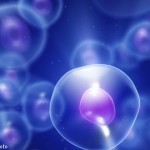Example: All the patients with SLE have a SLE Disease Activity Index (SLEDAI) score of 0 and are in remission. SLE-associated antibodies, such as anti-double stranded DNA, dropped to zero or near zero and have stayed there. Proteinuria disappeared, and complement C3 normalized.
Dr. Schett noted the muscle marker creatine kinase normalized in the myositis patients. In the systemic sclerosis patients, the European Scleroderma Trials and Research Group (EUSTAR) activity index and the modified Rodnan skin score both improved substantially.
“It seems you don’t end up in long-term B cell depletion from this therapy,” said Dr. Schett. He explained that CAR T therapy triggers initial rapid and sustained loss of circulating B cells, but B cells numbers bounce back about 50–100 days after the infusion.
“We thought maybe the lupus would come back when the B cells came back, but this didn’t happen,” Dr. Schett said. He speculated that part of the success of this response may have to do with the deeper depth of the initial depletion of B cells compared with an antibody-based approach with rituximab.
In terms of B cell lineage, this CD19-based CAR T cell therapy seems to only spare long-lived plasma cells, such as those residing in the bone marrow. In contrast, rituximab does not fully eliminate some B cells with autoimmune activation in the lymphatic tissue.6,7
Remaining long-lived plasma cells may play a role in SLE pathophysiology. Instead of CD19, some other trials of CAR T cell therapies in SLE are using BCMA-targeted antigens (i.e., B cell maturation antigen), which do kill long-lived plasma cells.11 However, the advantage of not eliminating such cells is that patients may maintain some immunity from before their treatment and may not require revaccination.2 In preliminary data, Dr. Schett shared that, after the B cells have reconstituted, patients’ antibodies from vaccinations they received before CAR T cell therapy seemed to be extremely stable (e.g., antibodies from measles, mumps, rubella and tetanus).
Toxicity is a major concern for CAR T cell therapy. Dr. Schett said the research team was concerned about the possibility of cytokine storm in their initial patients, but that did not occur. Also, the patients did not have other potential severe toxicities, such as neurotoxic effects or prolonged cytopenia.
Several patients with SLE are now two years post intervention, and many are at least one year out, Dr. Schett noted. More time is needed to see if these effects last and whether any long-term health risks emerge. However, the curative potential of these therapies—allowing total remission without the continued use of immunosuppressives—is compelling.

